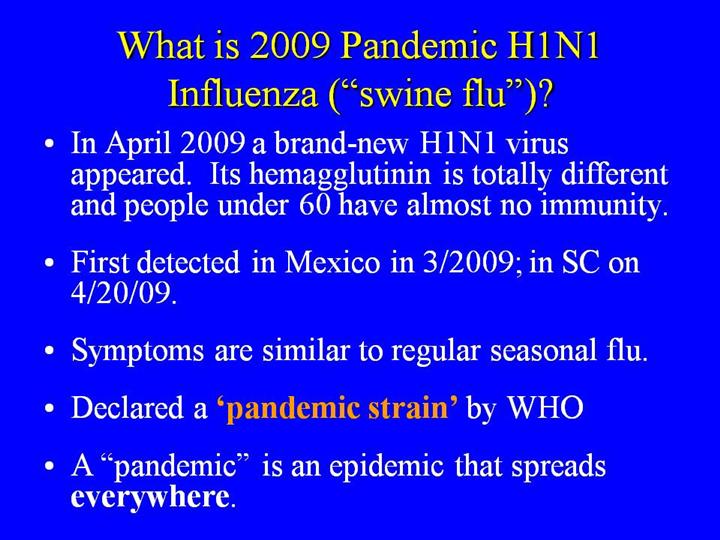 |
This virus was originally referred to as “H1N1 flu” because laboratory
testing showed that many of the genes in this new virus were very similar to
influenza viruses that normally occur in pigs in North America. But further
study has shown that this new virus is very different from what normally
circulates in North American pigs. It has two genes from flu viruses that
normally circulate in pigs in Europe and Asia and avian genes and human
genes. First detected in people in April 2009 in the United States. Other
countries, including Mexico and Canada, have reported people sick with this
new virus. spreading from person-to-person, probably in much the same way
that regular seasonal influenza viruses spread. Causing
a respiratory illness that is very similar to regular seasonal influenza.
|
